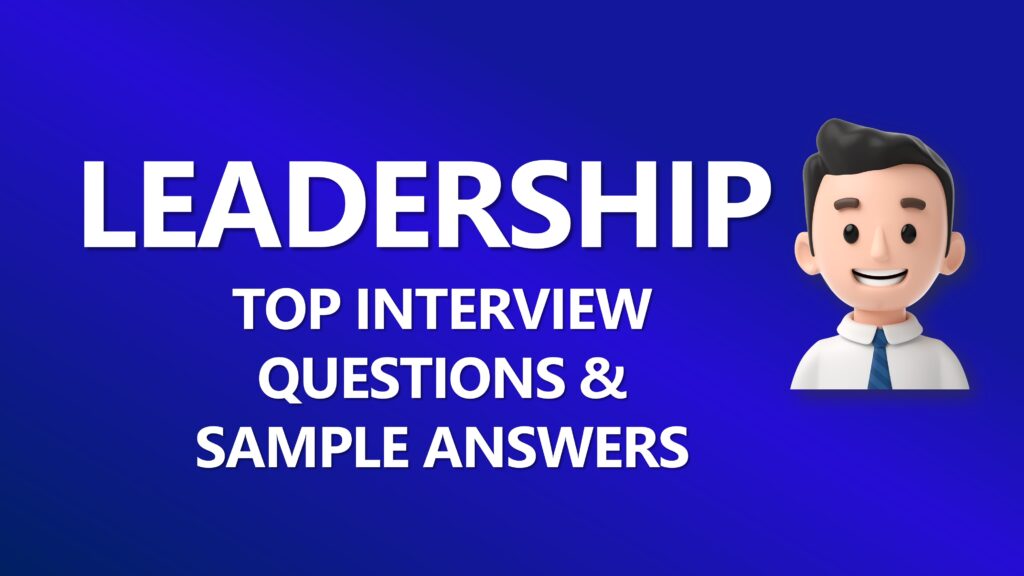Waitress Interview Questions
Are you gearing up for a waiter or waitress interview? Whether you’re stepping into the hospitality industry for the first time or looking to advance your career, preparing for your interview is crucial. In this blog, we’ll delve into the most common and challenging questions you might encounter, drawing from real-life experiences and situational scenarios. From basic inquiries about your experience and skills to complex, situational-based questions that test your problem-solving abilities, we’ve got you covered. We’ll also share valuable tips on handling high-pressure situations, effective customer service strategies, and how to gracefully navigate difficult interactions. By the end of this post, you’ll be equipped with the knowledge and confidence to impress your interviewers and secure that coveted position.
Basic Questions with Sample Answers
Question: Can you tell us about yourself and why you want to work as a waiter/waitress?
Answer:
“I have always been passionate about creating positive experiences for people. I have experience working in customer service roles, where I developed strong communication and problem-solving skills. I enjoy fast-paced environments and thrive under pressure, which makes the food service industry a great fit for me. I love interacting with people from diverse backgrounds and believe that working as a waiter/waitress allows me to contribute directly to memorable dining experiences.”
Question: Why do you want to work at this restaurant specifically?
Answer:
“I admire this restaurant for its reputation for exceptional service and high-quality food. I’ve dined here before and was impressed by the warm and professional atmosphere, as well as the attention to detail in every aspect of the dining experience. I want to be part of a team that values customer satisfaction as much as I do, and I believe this restaurant aligns perfectly with my work ethic and passion for hospitality.”
Question: How would you describe your experience in the food service industry?
Answer:
“I have two years of experience working in a fast-paced restaurant, where I honed my skills in multitasking, managing tables, and delivering exceptional service. I’ve handled busy shifts efficiently, worked with a POS system to take orders accurately, and built rapport with customers to ensure a welcoming experience. These experiences have taught me how to stay organized and maintain professionalism under pressure.”
Question: What is your greatest strength, and how does it help you as a waiter/waitress?
Answer:
My greatest strength is my ability to build rapport with customers and create a positive dining experience. I am a natural communicator and have a knack for making people feel welcome and comfortable. This skill is invaluable in the role of a waiter/waitress, as it allows me to anticipate customer needs and exceed their expectations.
Question: Can you describe your approach to listening to and understanding customer needs?
Answer:
“I believe active listening is key to understanding customer needs. When interacting with customers, I make sure to give them my full attention, clarify any uncertainties, and confirm their preferences to ensure accuracy. For instance, if a customer has a dietary restriction, I take the time to discuss options with them and coordinate with the kitchen to meet their needs. This approach helps build trust and ensures a positive dining experience.”
Question: How do you stay organized and manage multiple tasks during busy shifts?
Answer:
“I use a system of prioritization and communication to stay organized during busy shifts. I start by mentally categorizing tasks based on urgency, such as taking orders, delivering food, or assisting new customers. I also keep a checklist in mind to ensure nothing is missed. Communicating effectively with teammates helps divide responsibilities and maintain a smooth workflow. For example, during a recent busy shift, I managed five tables by staggering my visits to align with their dining stages, ensuring everyone received timely service without feeling rushed.”
Question: What wines do you often recommend to your customers? And Give an Example?
Answer:
“When recommending wines, I consider the customer’s preferences, the dishes they’ve ordered, and the flavor profiles that pair well. For example, if a customer orders a steak, I might suggest a robust red wine like a Cabernet Sauvignon or Malbec to complement the richness of the meat. For seafood dishes, I typically recommend a crisp white wine such as Sauvignon Blanc or Chardonnay. If a customer is unsure of their preference, I ask if they prefer something sweeter, drier, or more full-bodied, and tailor my recommendation accordingly. In one instance, a couple was hesitant about pairing wines with their meal, and I suggested a Pinot Noir for its versatility, which they greatly appreciated.”
Question: How comfortable are you with preparing tables and ensuring a proper dining setup?
Answer:
I am very comfortable with preparing tables and ensuring a proper dining setup. I pay close attention to detail, ensuring that tables are clean, sanitized, and set with the appropriate silverware, glassware, and table linens. I also take pride in creating a welcoming and inviting atmosphere for our guests.
Question: What do you know about food safety practices, and how do you implement them?
Answer:
Food safety is a top priority for me. I am familiar with basic food safety guidelines, such as proper handwashing, temperature control, and cross-contamination prevention. I always practice these principles to ensure the safety and well-being of our customers.
Question: How would you rate your upselling skills, and can you provide an example?
Answer:
I would rate my upselling skills as strong. I believe that upselling is an opportunity to enhance the customer’s dining experience and increase sales. For example, if a customer orders a main course, I might suggest a complementary appetizer or dessert. I always present upsell options in a friendly and informative manner, focusing on the added value they provide.
Question: What is your approach to handling dietary restrictions or special requests from customers?
Answer:
“I prioritize understanding the customer’s needs by asking detailed questions about their dietary restrictions or preferences. Once I have clarity, I communicate these requests to the kitchen staff clearly and confirm that the dish can be prepared accordingly. I also double-check with the customer to ensure they feel confident in our ability to meet their needs. For example, I once assisted a customer with a severe gluten allergy by verifying ingredient lists and suggesting a dish that met their requirements, which they greatly appreciated.”
Question: Have you worked long shifts before, and how do you handle working on your feet for extended periods?
Answer:
“Yes, I have experience working long shifts in fast-paced environments. To stay energized, I ensure I wear comfortable footwear, stay hydrated, and take short breaks whenever possible. Additionally, I maintain a positive mindset and focus on providing excellent service, which keeps me motivated even during extended hours. For instance, during a holiday season, I worked double shifts to cover for a teammate and ensured every customer received attentive service.”
Question: What is your availability, and are you comfortable working evenings, weekends, and holidays?
Answer:
“I have a flexible schedule and am comfortable working evenings, weekends, and holidays. I understand that these are peak times in the restaurant industry, and I am prepared to contribute when demand is high. I value teamwork and the opportunity to make these busy periods run smoothly.”
Question: What are some recent food trends you’ve noticed, and how do you stay updated?
Answer:
“Recently, I’ve noticed a growing interest in plant-based dishes, locally-sourced ingredients, and sustainable dining options. Customers are also drawn to fusion cuisines and interactive dining experiences, such as tableside preparation. I stay updated by following industry blogs, attending food expos, and listening to customer feedback about their dining preferences.”
Question: How important is maintaining a safe workplace, and what steps do you take to ensure safety?
Answer:
“Maintaining a safe workplace is critical for both staff and customers. I take steps like promptly cleaning up spills, ensuring walkways are clear, and adhering to proper food handling and hygiene standards. For instance, if I notice a spill in the dining area, I immediately address it and place a warning sign to prevent accidents.”
Question: Are you familiar with using Point of Sale (POS) systems for taking orders?
Answer:
“Yes, I am familiar with using POS systems. In my previous role, I used them for taking orders, processing payments, and keeping track of table statuses. I find POS systems efficient for minimizing errors and ensuring a smooth service flow. I’m quick to learn new systems and can adapt easily if the restaurant uses a different platform.”
Situational Interview Questions with Same Answers
Question: Your colleague falls ill during a busy shift, leaving you to manage multiple tables. How do you prioritize tasks and ensure smooth service?
Answer:
“I would stay calm and quickly assess the priorities, such as attending to tables that have been waiting the longest or handling time-sensitive tasks like taking drink orders. I’d communicate openly with the customers, letting them know there may be a slight delay but assuring them I am managing their needs. For example, I’d group tasks to save time, such as serving drinks to one table while taking orders at another. Additionally, I’d notify the manager for support or temporary reassignment of duties if needed.”
Question: A customer has been waiting longer than usual for their meal. How do you address their concern?
Answer:
“I would approach the customer proactively, apologize for the delay, and provide a brief explanation, such as ‘The kitchen is handling a larger volume than usual.’ I would reassure them that their order is being prioritized and check with the kitchen for an update. If the wait is longer than expected, I might offer a small gesture, like complimentary bread or a drink refill, to show we value their patience.”
Question: You notice a spill in the dining area while serving food. What steps do you take to handle it effectively?
Answer:
“I would first ensure no one steps into the spill by placing a warning sign or asking someone nearby to watch the area while I retrieve cleaning supplies. If I’m carrying food, I would prioritize safely delivering it first before cleaning the spill immediately to prevent accidents. Safety is always a priority, and I would ensure the area is fully dry before allowing customers to pass through.”
Question: A customer requests a substitution that goes against restaurant policy. How do you explain the policy while accommodating them as much as possible?
Answer:
“I would politely explain the policy by saying something like, ‘I understand your request, but unfortunately, our policy doesn’t allow for this substitution because of consistency standards in our menu.’ I’d then offer alternative options or suggestions that align with the customer’s needs. For example, I might suggest a dish with similar ingredients or offer to customize within the restaurant’s guidelines.”
Question: A child at a table is disturbing other diners. How would you handle this situation diplomatically?
Answer:
“I would approach the table with a friendly demeanor and address the parents calmly, saying something like, ‘I hope you’re enjoying your meal. I just wanted to let you know that some nearby guests are finding it challenging to focus on their dining experience. Is there anything I can do to help make things more comfortable for you and your child?’ This approach shows empathy while encouraging the parents to manage the situation without making them feel uncomfortable.”
Question: The kitchen informs you that a specific menu item is unavailable. How do you communicate this to the customer and suggest alternatives?
Answer:
“I would approach the customer with an apology for the inconvenience, saying, ‘I’m sorry, but unfortunately, the dish you’ve chosen is currently unavailable due to a supply issue.’ I’d then suggest alternatives that are similar in flavor or appeal, such as, ‘May I recommend our grilled chicken, which is similar to the roasted one you selected? It’s a popular choice and pairs wonderfully with our side dishes.’ I’d ensure the customer feels valued and has options to choose from.”
Question: You accidentally deliver the wrong order to a table. How do you correct the mistake and ensure customer satisfaction?
Answer:
“I would immediately apologize for the mix-up, saying, ‘I’m so sorry, but it seems there was a mistake with your order. Let me correct this for you right away.’ I would quickly notify the kitchen to prepare the correct dish and ensure it’s prioritized. In the meantime, I might offer a small gesture, such as a complimentary drink or appetizer, to show that we value their experience. Once resolved, I’d follow up to ensure they are satisfied with their meal.”
Question: Two tables simultaneously request your attention. How do you handle both without making either feel neglected?
Answer:
“I would acknowledge both tables to show I’m aware of their needs. For example, I’d say to one table, ‘I’ll be right with you in just a moment,’ and then attend to the table that seems to have a more urgent need, such as asking for the check. I’d aim to address each request quickly and return to the second table promptly. Clear communication and a calm demeanor help ensure neither table feels overlooked.”
Question: A customer is unhappy with their meal. How do you handle their feedback and resolve the issue?
Answer:
“I would listen carefully to the customer’s concern and show empathy by saying, ‘I’m sorry to hear the meal isn’t meeting your expectations. Can you tell me more about the issue so I can make it right for you?’ Depending on their feedback, I’d offer solutions, such as replacing the dish, suggesting an alternative, or adjusting the preparation. If needed, I’d involve the manager to ensure they leave satisfied. Following up to ensure they are happy with the resolution is crucial.”
Question: A group wants to split their bill in multiple ways. How do you manage the situation efficiently?
Answer:
“I would let the group know that splitting the bill is no problem and ask for specifics, such as how many ways it needs to be divided and if each person will pay for their specific items or split it evenly. I’d ensure accurate entries into the POS system to avoid confusion and double-check the bill breakdown with the group before finalizing. If it’s a large group, I’d politely ask for their patience while I ensure the process is handled correctly.”
Question: While setting up for a reservation, you break a piece of glassware. How do you address the situation and ensure safety?
Answer:
“I would immediately ensure the area is safe by carefully sweeping up the broken glass and disposing of it in a safe container. If there are any larger shards, I’d use gloves to handle them. Then, I’d inform the manager or supervisor about the accident so they can assist with getting a replacement and ensure that safety protocols are followed. If the breakage occurs in the dining area, I’d make sure it’s cleaned up promptly so no one gets hurt.”
Question: You suspect that a customer may leave without paying their bill. What actions do you take?
Answer:
“If I suspect a customer may leave without paying, I would discreetly keep an eye on the table while maintaining a friendly and professional demeanor. Before they get up, I would offer to bring them the check or ask if they need anything else, giving them the chance to settle the bill. If the situation escalates, I’d notify the manager immediately to handle it appropriately, ensuring the customer’s experience is still positive and we resolve the matter swiftly.”
Question: A co-worker isn’t fulfilling their duties during a shift, and it impacts the team. How do you address this?
Answer:
“I would try to address the issue discreetly by speaking to my co-worker privately and asking if they need any help or if there’s a specific reason they’re struggling to complete their duties. If the problem persists, I would bring it to the attention of the manager so they can address the issue professionally, ensuring that the team’s performance and customer service are not impacted. I believe in maintaining a supportive and cooperative environment to ensure the team works well together.”
Question: A customer leaves a negative review about their dining experience. How do you respond or improve in the future?
Answer:
“I would first read the review carefully and try to understand the customer’s specific concerns. Then, I would respond politely and professionally, acknowledging their feedback and offering an apology for their experience, such as, ‘I’m sorry to hear your experience wasn’t up to our usual standards. We take all feedback seriously and will address your concerns with our team to improve.’ To improve in the future, I would discuss the review with my team and supervisors to identify areas for improvement in service, communication, or food quality.”
Question: You’re asked to work overtime on short notice. How do you handle this request?
Answer:
“I would assess my availability and commitment to the team. If I’m able to stay, I would confirm with my supervisor that I can work the additional hours and ensure I’m mentally prepared for the extended shift. If I have prior commitments or personal constraints, I would communicate this honestly and offer to help in another way, such as suggesting a shift swap or helping with other responsibilities. I understand that flexibility is important in this role, and I strive to be supportive whenever possible.”
Question: A customer asks for a dish not on the menu. How do you respond while maintaining a positive experience?
Answer:
“I would first acknowledge the customer’s request and explain politely that the dish isn’t available, but I’d reassure them that we have many other great options on the menu. I’d offer a few recommendations based on their preferences and ask if there’s something similar, they’d like to try. The goal is to make sure the customer still feels valued and leaves happy with a positive experience, even if their first choice isn’t available.”
Question: A customer is intoxicated and causing a disturbance. How do you handle the situation professionally?
Answer:
“I would remain calm and polite, approaching the customer with respect. I’d ask if they’re okay and if there’s anything they need, while subtly trying to de-escalate the situation. If the behavior continues, I’d inform the manager or supervisor, who can address the situation more formally, possibly offering a water or calming alternative to help the customer. It’s important to ensure a safe and pleasant environment for all customers, and professional handling of such situations is key.”
Question: What would you do if your car broke down on the way to work and you were running late?
Answer:
“I would immediately contact my manager or supervisor to inform them of the situation and let them know that I’m doing everything I can to arrive as soon as possible. I would consider alternate transportation options like a taxi or rideshare service to minimize my delay. I understand the importance of being on time, especially during busy shifts, and I would ensure to communicate any delays promptly.”
Question: Tell us about a time when you successfully handled a high-pressure situation at work.
Answer:
“In my previous job, we had a sudden influx of customers during a busy holiday weekend. The kitchen was backed up, and multiple tables were waiting for their food. I remained calm and prioritized tasks by communicating effectively with the kitchen and front-of-house team. I kept customers informed about wait times and offered complimentary drinks or appetizers as a goodwill gesture. Despite the pressure, we managed to maintain a positive atmosphere, and customers appreciated the effort, resulting in a successful shift.”
Question: Describe a situation where you juggled multiple priorities at work and achieved success.
Answer:
“At my previous job, I once had to juggle multiple responsibilities during a busy lunch rush. I was responsible for taking orders, serving food, clearing tables, and assisting my colleagues. To manage the workload effectively, I prioritized tasks, broke down complex tasks into smaller, manageable steps, and worked efficiently. By staying organized and focused, I successfully completed all my tasks and contributed to a smooth dining experience for our customers.
In conclusion, preparing for a waiter or waitress interview involves more than just rehearsing answers; it’s about understanding the nuances of customer service and demonstrating your ability to thrive in a fast-paced environment. By familiarizing yourself with common interview questions, practicing situational responses, and honing your strategies for managing difficult situations, you’ll be well on your way to standing out as a candidate. Remember, confidence is key, and with the right preparation, you can tackle any challenge that comes your way. So, take these insights to heart, and step into your interview ready to shine! Good luck!
Refer to our previous articles common interview questions, HR interview questions, behavioural interview questions, and job interview Conversion.
- Common Job Interview Questions And Answers In 2025
- Job Interview Conversation For Freshers
- Common Behavioral Interview Questions And Answers
- Most Common HR Interview Questions
- Phone Interview Questions And Answers





